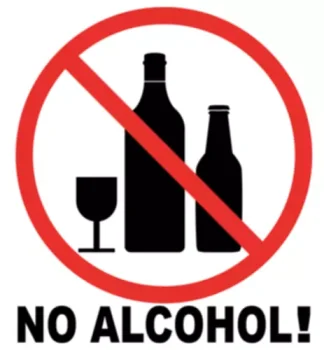Blurry Vision 10 Reasons for Blurred Vision & Treatment

If the corneal abrasion is small, it’ll likely heal in a day or two, but larger abrasions may require medical treatment. Blurry vision makes your eyesight feel out of focus, making it difficult to see fine detail. Sometimes, the retina rips (retinal tear) or pulls away from the back of the eye (retinal detachment). These problems can threaten your eyesight if they aren’t treated quickly.
Can diabetes lead to blurred vision?
Long-term or excessive alcohol use increases the risk of eye damage and disease. While some of the effects of alcohol on the eyes are temporary, others are serious and can be permanent. You may be aware that excessive alcohol use damages your body. If blurry vision results from dry eyes, allergies, or eyestrain from prolonged screen use, natural remedies and lifestyle changes may help.
- This phenomenon can be alarming and may cause temporary visual impairment.
- A damaged optic nerve can lead to low vision and sometimes blindness.
- Weak blood vessels may possibly bleed, grow new weak blood vessels or even lead to retinal detachment with risk of permanent vision loss.
- Often these rapid eye movements are due to neurological problems in the brain.
Treatments for eye-related issues with alcohol

He practiced clinical medicine for over a decade before he shifted his focus to the field of health communications. During his active practice he served as the head of the Dept. of Microbiology blurry vision day after drinking in a diagnostic centre in India. On a three-year communications program in Germany, Mohan developed a keen interest in German Medicine (Homoeopathy), and other alternative systems of medicine.
How it occurs
- However, these changes will go away once the alcohol has cleared the system.
- Excessive alcohol consumption can lead to temporary impairment of the optic nerves, resulting in blurred vision.
- There may be permanent damage to vision without rapid treatment.
- You might also be allergic to detergent used to wash your bedding.
If your brain isn’t communicating correctly with the glands that produce tears, for example, you may notice that your eyes are dry during alcohol withdrawal. Many of these conditions can cause significant visual changes, unusual eye movement, and vision loss. Consuming alcohol in moderation, or having two or fewer drinks per day for men and one drink or fewer per day for women, is unlikely to cause long-term eye issues. Tears that evaporate too quickly can’t meet the eyes’ functional needs. This results in inflammation and irritation, causing symptoms of dry eye.
Concussion (mild traumatic brain injury) needing imaging

If you have any eye problems you worry may be related to drinking, talk to your eye doctor. They can do a comprehensive eye exam to look for signs of cataracts, macular degeneration and other problems. One study found that having a 0.08% blood alcohol level (the legal limit for driving in most states) can affect various types of eye movements in healthy young adults. The presence of a specific type of nystagmus (rhythmic involuntary eye movements) can actually help police decide whether to arrest a driver for drinking and driving. Blurred vision typically occurs at 0.10% blood alcohol level. The number of drinks it takes to get to that level varies based on sex, weight and other factors.


- High sugar levels can weaken blood vessels and damage the retina.
- By routinely visiting an eye doctor and following their recommendations for managing these conditions, individuals can minimize the impact that alcohol has on their vision.
- When part of the retina gets pulled away from the back wall of the eye, the nerve cells there no longer work properly and the result can be suddenly blurry vision.
- Alcoholic amblyopia, also known as « toxic amblyopia, » is another vision-related condition that can occur due to excessive alcohol consumption.